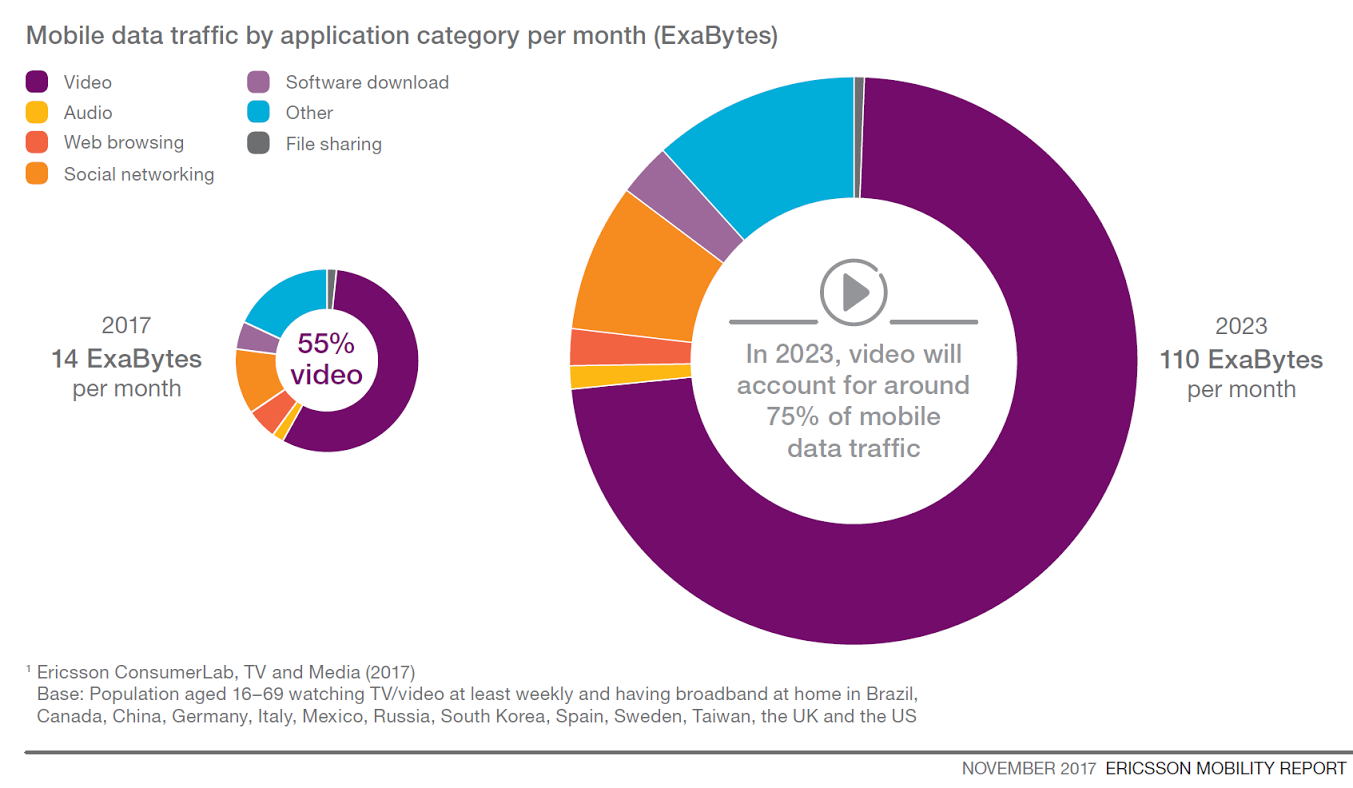We have Net Neutrality on our mind. A key issue is the impact of different types of content on the network’s capacity. To give you a better perspective, we looked at data from Cisco’s Visual Networking Index and Ericsson’s Mobility Report. We found that for traffic outside of data centers, video is by far a data hog and only expected to get worse.
In fact, Cisco reports IP video was already 73 percent of global consumer traffic and is expected to grow to 83 percent by 2021. Yet, how this video is delivered varies significantly. Right now only a third of video delivered over IP is from traditional commercial TV services (e.g., Comcast and FIOS in the US). With consumers increasingly unplugging and using mobile devices, this figure will drop even more in the future.

For just mobile data, Ericsson reports video is 55 percent of traffic and will grow to 75 percent by 2023. Yet, mobile presents another problem. Datacenters and most Internet access providers charge for bandwidth – the maximum amount of data that can be sent in a given period of time. Mobile is usually paid for per gigabyte delivered to a device. That seems to be a good model for modulating overuse, but it is not the most democratic system. For now, it is up to content delivery networks and other technologies to innovate so consumers can get high-quality video without a degradation of quality.
As with everything else these days, blockchain is also being proposed a solution. Specifically, people are experimenting with ways to create Ethereum-based mesh networks that will bypass the Internet at the edge.
Of course, there are policy-based solutions to network congestion due to video. Not regulation, but instead something akin to storage management policy. Prioritization of traffic already happens within networks. Perhaps, just perhaps, this type of prioritization can be for video versus non-video applications. What do you think?
Feature image via Pixabay


















